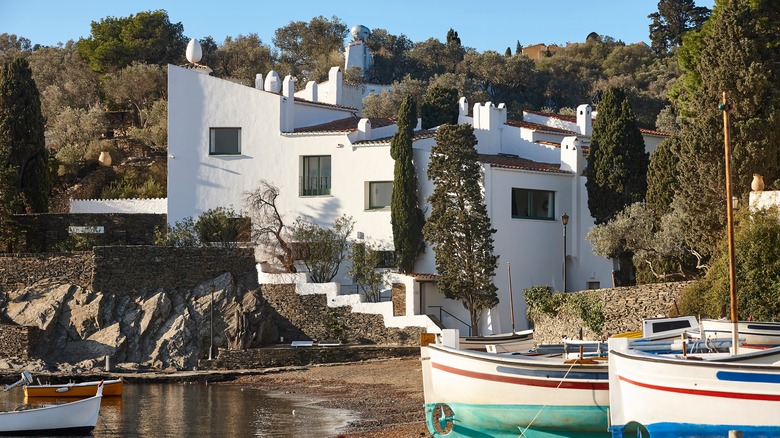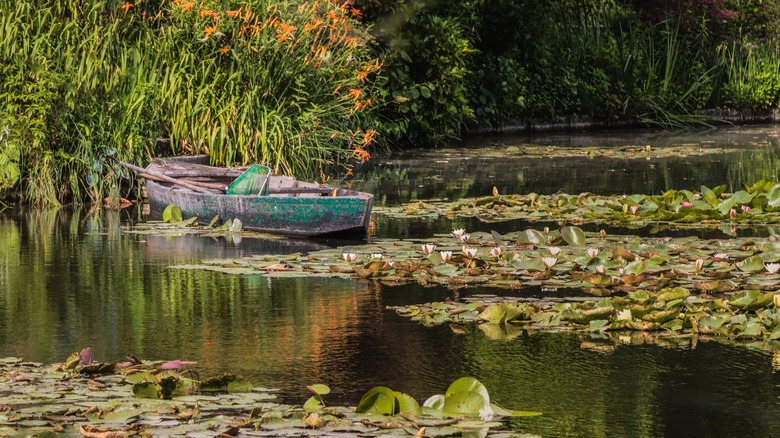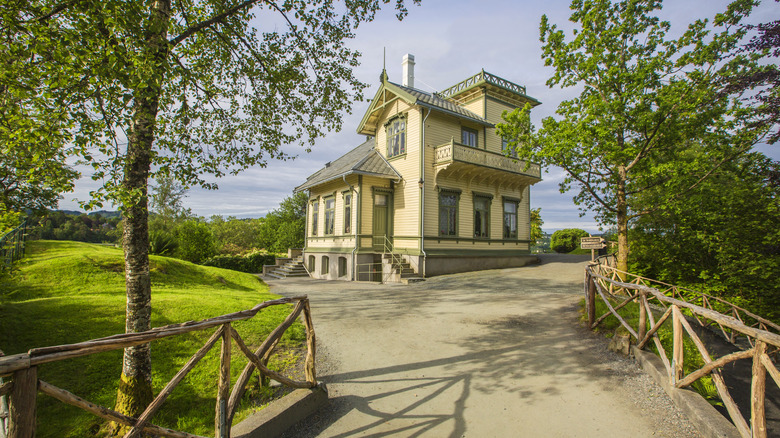The Most Inspiring Artists' Homes You Can Tour In Europe, According To Rick Steves
It's not just the way that the great artists see the world that's so inspiring — it's also the world they see. How important that is to their work becomes all the more vivid when visiting their homes and studios, often sculpted as much as the art created there to support the creative process. For travel icon, Rick Steves, who ranks artists' homes among his favorite destinations, they bring something more. "There's something about these special places that conjures the strange magic of creative work," he writes. That's why Steves, and so many others, feel fortunate that many of these artists' homes are now open to the public.
The granddaddy of them all, Opera del Duomo, is just across from the Cathedral of Santa Maria del Fiore in Florence, the most walkable city in the world. Better known as "the Duomo," the church remains one of the greatest architectural masterpieces of the world, employing a who's who of Renaissance masters to make it so. The Opera served as the workshop where these masterpieces came to life. Indeed, this was where Michelangelo carved "David". Today, it primarily attracts visitors for the museum inside, filled to the brim with 750 works of art by Michelangelo, Donatello, Brunelleschi, Ghiberti, and more. Plus, more than 700 years since opening, it also still functions as a workshop, as Steves notes. "Through the open doorway, you can see today's masters sculpting replacement statues and restoring old ones to keep the cathedral's art in good repair."
Monet and Rembrandt
Perhaps the most famous artist home and studio in Europe is the Claude Monet House and Gardens in Giverny, another of the "Emily In Paris" filming locations you can visit. As becomes quickly apparent, the water lilies and bridge that feature in so many of his paintings are not only real places but the painter's backyard. Today, the garden remains as alive as Monet's fame, with bamboo, ginkgo, and weeping willows framing a scene now so familiar. The house is open, too, and after intensive restoration work, paints a vivid picture of Monet's life there, including his bedroom, sitting room, studio, dining room, and kitchen. Hanging from the walls is the artist's collection of Japanese prints, which inspired so much of his gardens and painting.
The light that shone from the Dutch Golden Age fills the canvases of the revolutionary work of its renowned artists, who now only require last names for recognition — Vermeer and Rembrandt. The most famous of all Dutch painters, Rembrandt van Rijn kept his home and studio along the Zwanenburgwal canal in the center of Amsterdam. There, he created masterpiece after masterpiece from 1639 to 1658, including his most famous work, "The Night Watch." Inside the restored Rembrandt House Museum, exhibition rooms bring to life the dramatic rise and fall of Rembrandt's story, while displaying his art and providing demonstrations of his etching and painting techniques. The highlight, however, remains his north-facing, light-bathed studio, where he put brush to canvas.
Dalí and Grieg
The Salvador Dalí House in the Spanish beach town of Cadaqués – part of "the Dali triangle" on the Costa Brava – looks every bit the part of the renowned surrealist. For over 40 years, he and his wife, Gala, made a humble fisherman's cottage into a mind-bending labyrinth, in Dalí's inimitable style. With a giant white egg on the roof, staircases that lead nowhere, and a phallus-shaped swimming pool, the home loosens visitors' grip on reality. The home is also a love story, as Dalí left upon Gala's death, never to return.
In comparison to these superstars of art, 19th-century Norwegian composer Edvard Grieg perhaps slips under the radar, at least outside of Norway and the classical music world. That may be one of the reasons Steves champions his home just outside Bergen. "Quiet, lush, and secluded, the dreamy setting was ideal for soaking up inspirational fjord beauty," he writes. Named Troldhaugen, the Victorian home with its private "composer's cabin" sits atop a rocky outcrop on the bay of Nordåsvannet, still offering the beautiful views that inspired his work. Indeed, Grieg loved it so much that he made sure his bones would lie on the shore. "Here I want to rest forever," he said. His 1892 Steinway grand piano still gets a regular workout, too, at public concerts in the hall onsite.


